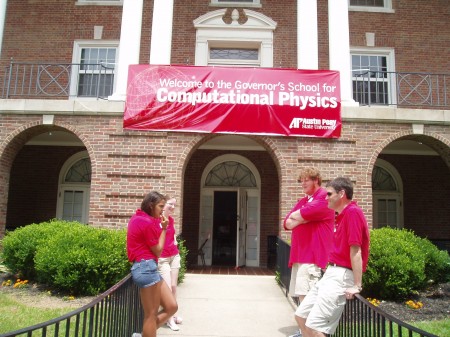For the next five weeks, 36 high school students are at Austin Peay State University for Tennessee’s Governor’s School in Computational Physics. Students began arriving on ASPU’s main campus June 1.

Students and mentors in the Governor’s School for Computational Physics being held for the next five weeks at Austin Peay State University talk on the first day of the school June 1. This is APSU’s first Governor’s School.
“The students selected for this program are very impressive,” said Dr. Jaime Taylor, professor of physics and interim dean of the College of Science and Mathematics. “They want to learn, and they are quick-minded.”
The Governor’s School in Computational Physics was approved late last summer, long after other Governor’s Schools had begun recruiting for their Summer 2008 programs. Despite this disadvantage, APSU’S Governor’s School received about 100 applications.Funded by the state, Governor’s Schools are designed for gifted high school students with each school providing challenging, intensive learning experiences in specific disciplines. The Governor’s School in Computational Physics is APSU’s first Governor’s School.
From these applications, only 36 students were selected for the five-week Governor’s School at APSU. Among those 36, eight of the students attending the Governor’s School at APSU this summer are No. 1 in their class, and three rank No. 2 in their class.
Computational physics combines physics, computer science and applied mathematics to provide scientific solutions to complex problems. Taking two intensive courses, participants will earn eight hours of college credit and will take trips to such computational research centers as Oak Ridge National Laboratory’s National Center for Computational Sciences and NASA’s Marshall Space Flight Center.
Austin Peay’s department of physics and astronomy, one of the first in the U.S. to implement a required course in Computation Methods, has earned a reputation for recruiting, retaining and placing students in prestigious fellowships, assistantships and doctoral programs. In 1999, the department had nine majors. By 2005-06, it had more than 60 majors.


